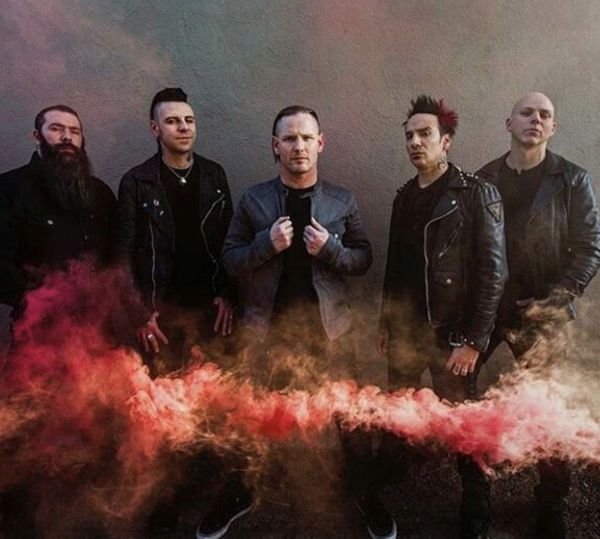Over two million albums sold, three Grammy nominations collected, a couple of chart-topping singles certified and roughly two decades as a band in the books.
That’s not too bad for what many consider to be Slipknot frontman Corey Taylor’s side project. But then this isn’t really a side project, is it? Stone Sour are a rock radio powerhouse that just happen to feature one of heavy metal’s most famous voices, a voice that also just happens to be in another hugely popular band.
It’s pretty widely known, but some may still be surprised to learn that Stone Sour is Taylor’s first band, formed in 1992, three years prior to Slipknot’s birth. The band recorded three demos but never released a proper album before going on hiatus in 1997 as Taylor concentrated on Slipknot, the band he helped found in 1995. If anything, you’d have to say Slipknot is the side project. Except, of course, it’s not.
The story could have ended there in 1997 for Stone Sour. We’ve seen it before: one or two members make it big in another band (usually the singer or guitarist) and never look back while the other guys are left behind scrambling to make ends meet with day jobs and replacement players that never quite meet expectations.
Taylor felt differently, though. He didn’t forget where he came from, and even after the first two Slipknot albums went Platinum, the singer reformed Stone Sour with the other three original members and Slipknot guitarist Jim Root, finally releasing a self-titled debut album in 2000. The album spent several weeks on the Billboard charts and reached as high as No. 46, mostly due to the strength of hit single “Bother,” and the band toured together for six months to support it. They likely could have toured longer, but Taylor and Root’s commitment to Slipknot’s schedule had already been written, resulting in Stone Sour taking a hiatus once again, though they now knew the band would carry on at some undetermined point in the future.
Taylor confessed at the time that he not only wanted Stone Sour to continue but actually needed Stone Sour to continue, despite the success he had already enjoyed in Slipknot. He explained that, even though the two bands share many of the same fans, they are two very different entities, both in terms of style and sound, and he needed to have both outlets continue to exist in order to have an outlet for all of the music he was creating.
“The Stone Sour side is definitely much more of an approachable side in a lot of ways,” he told Billboard. “I think that allows me to deal with some of the hits that I’ve taken in my relationship side of life. It’s definitely a little more of the romantic side. It has some of the more melancholy moments in it instead of just dipping straight into that darker rage, which I definitely have a tendency to do when I’m in Slipknot mode.
“With Stone Sour mode, it’s a little more contemplative. It’s a little more almost like pensive. But I try to flip that on its head and look at things from a different point of view, whereas a lot of people tend to write from more of a clich

